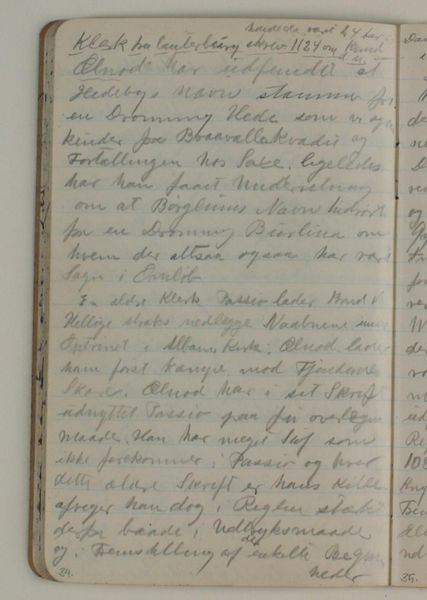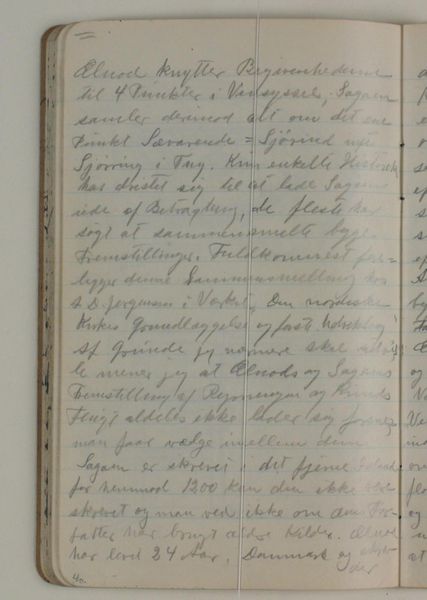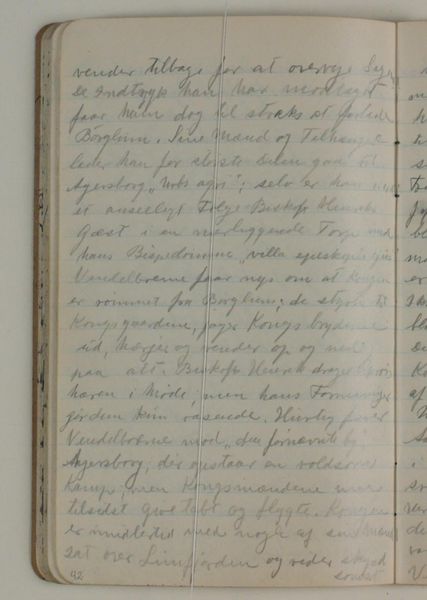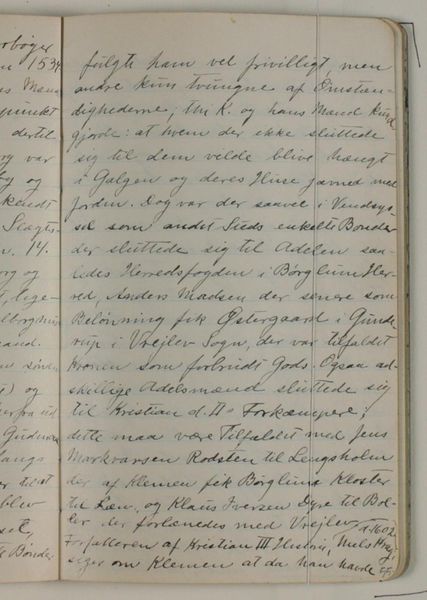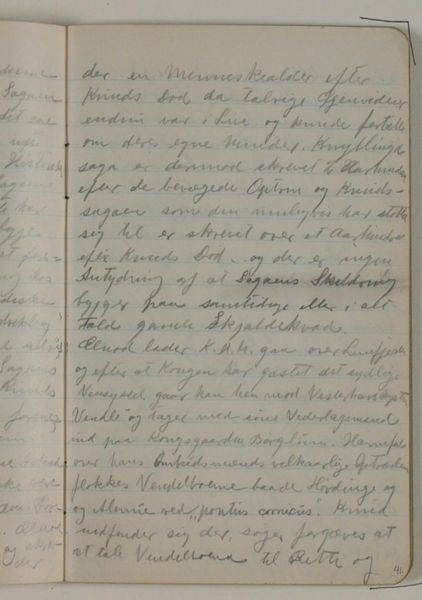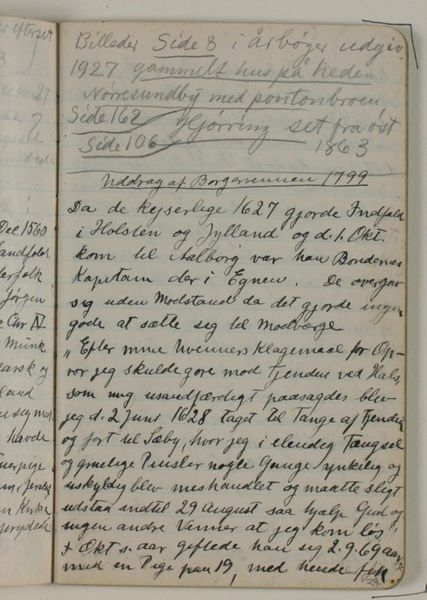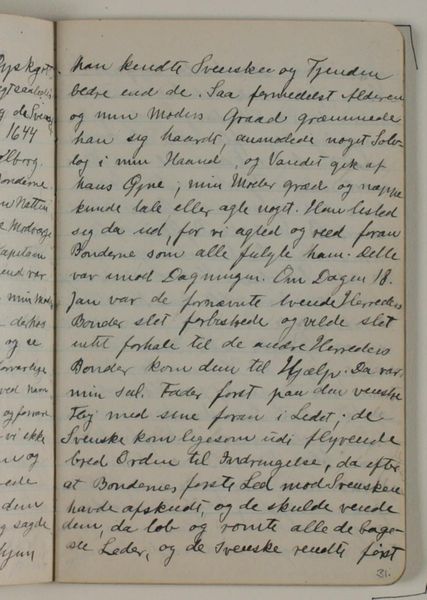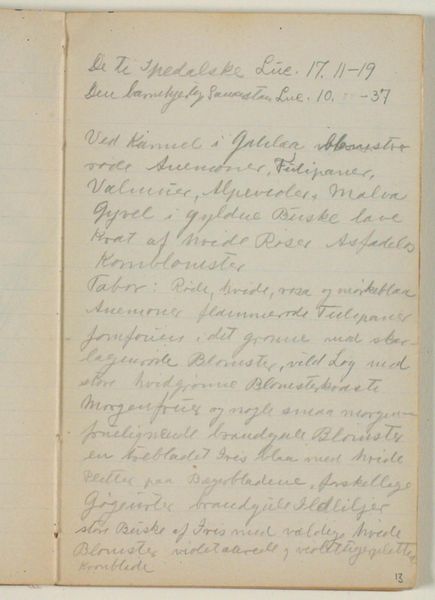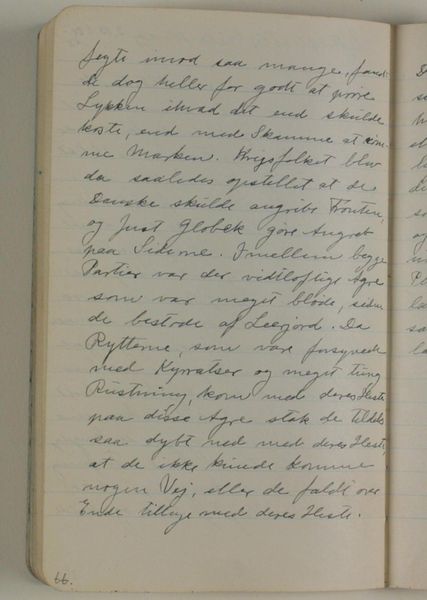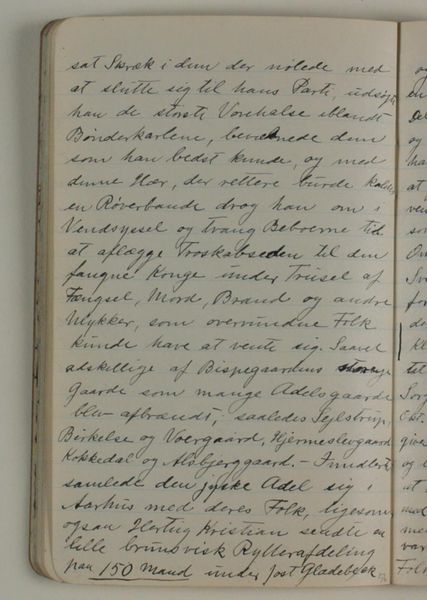
Notater vedrørende Ælnods saga om Knud den helliges færd i Vendsyssel. afskrift efter artikel i Historisk Tidsskrift af Hans Olrik. 1933 - 1934
0:00
0:00
drawing, mixed-media, textile, paper
#
drawing
#
mixed-media
#
textile
#
paper
Dimensions: 175 mm (height) x 109 mm (width) (monteringsmaal), 175 mm (height) x 109 mm (width) (bladmaal)
Editor: This is "Notater vedrørende Ælnods saga om Knud den helliges færd i Vendsyssel. afskrift efter artikel i Historisk Tidsskrift af Hans Olrik," or, Notes Regarding Ælnod's Saga of Knud the Holy's Journey in Vendsyssel. Transcription After an Article in the Historical Journal by Hans Olrik. It's by Niels Larsen Stevns, from 1933-1934. It's a mixed media work that incorporates drawing, textiles, and paper. I am struck by how textural it is! What can you tell me about the way this was made? Curator: It's interesting to consider the context of this work’s production. What paper was available to Stevns? Where did he source his textiles? These materials speak volumes about his immediate surroundings and the resources he had available. Were these scrap materials, hinting at a lifestyle of making do? Or carefully chosen components of an intentional whole? Editor: That's fascinating, I hadn't thought about it that way. The materiality of the art work reveals so much! The types of thread, the weave of the fabric… Curator: Exactly! This moves the discussion away from a traditional art historical emphasis on solely aesthetics or symbolism and forces us to examine the labour involved in creating this piece. What processes did Stevns engage in? And how are those processes implicated in broader networks of material production and consumption? What do you think this might signify for art's value? Editor: So, it is not just about Stevns' artistic vision, but also about the hands that made the paper and wove the textile? How those hands contributed meaning. Curator: Precisely. This way, we shift our focus to consider the broader systems of making of the art piece rather than seeing the final composition in isolation. And, in doing so, we challenge conventional notions of who gets to be called "artist." Editor: I had never considered art from the position of its production this deeply, this is a whole new perspective for me to appreciate material culture. Thank you! Curator: Absolutely. By recognizing the material conditions and production processes, we gain a richer understanding of the artwork’s place within broader historical and social frameworks.
Comments
No comments
Be the first to comment and join the conversation on the ultimate creative platform.
